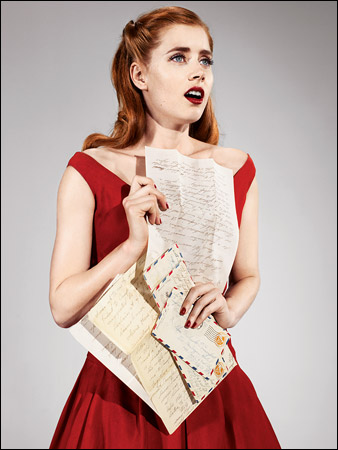the last word on emily gould and female confessional writers
by Rebecca Traister:
What provokes such fury, over Carrie Bradshaw, and -- for a flash -- over Gould (barring a book deal and TV show that will turn her meanderings into cultural furniture) is that in a media landscape in which there are a severely limited number of spaces for women's writing voices, the ones that get tapped become necessarily, and deeply inaccurately, emblematic -- of their gender, their generation, their profession. More annoying -- and twisted -- is that those meager spots for women are consistently filled by those willing to expose themselves, visually and emotionally. And not accidentally, by those willing to expose themselves in a way that is comfortable, and often alluring, to many of the men who control the media, and to many of the women who consume it. There is a storied history of bright women writers (many of whom are mentioned in a New York Observer article this week), from generational confessionalists like Joyce Maynard and Elizabeth Wurtzel to cultural critics like Katie Roiphe to novelists like Lucinda Rosenfeld and Marisha Pessl, who have been raised up as media darlings, photographed in appealing poses or in titillating features, and then ripped apart by critics (including, on more than one occasion, me).
When we are fed -- and gobble up -- stories by or about single urban working women, those exotic and potentially threatening creatures presented to us are often doing things like confessing their self-doubt, discussing their sex lives, lying on rumpled sheets looking pretty.
Any suggestion that this is anything other than a double standard is false. When magazines feature stories about writers like those smart young men over at N+1 (as the Times magazine did a few years ago) those men are not typically photographed blogging in their beds; when, as the Observer suggested, we read a first-person confessional by Philip Weiss (who wrote recently for New York about his extramarital sexual yearnings) we are not treated to a bare-limbed image of him, or any image of him at all.
We are mired in a repetitious pattern of hate, jealousy and resentment toward those who are plucked by media powers and come to stand -- however inefficiently -- for the rest of us in the cultural imagination, securing the top spots, the best exposure, the prime media real estate in exchange for openings veins of feminine vulnerability.
No matter how angry you felt about Gould's piece, it was almost impossible to read the comments and not feel terrible: for her, about her, and about yourself for having even peeked. The process is exhausting, and not good for anyone, especially women who get stuck with some lame avatar they feel does not represent them, but whom they do not particularly feel like burning at the stake just for having been clever, lucky or talented enough to wind up drawing a spotlight.
We have to remember: There is nothing wrong with women writing about themselves, their youth, their indiscretions, their habits and values and personal development. Men have been writing about this stuff for thousands of years; they call it the canon.And like their male contemporaries, a lot of this writing disappoints. When it does, there is nothing wrong with criticizing it. The thing that is wrong -- really wrong -- is when we forget that these kinds of stories are not the only ones that women have to tell.
So rather than being troubled by the fact that Gould -- or Bushnell, or Bradshaw, or whoever -- has the spotlight, why not question why so few other versions of femininity are allowed to share it?




<< Home